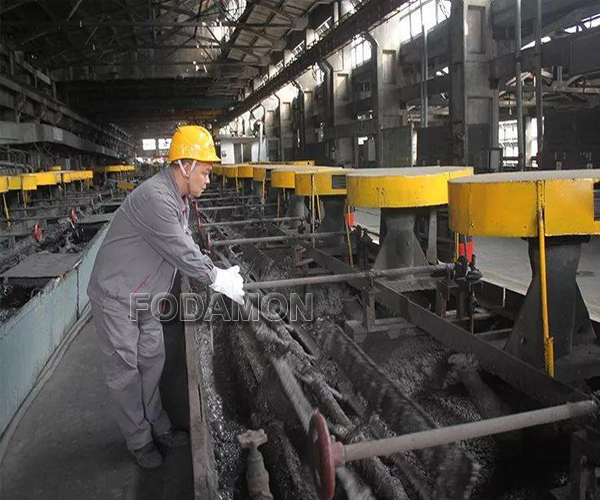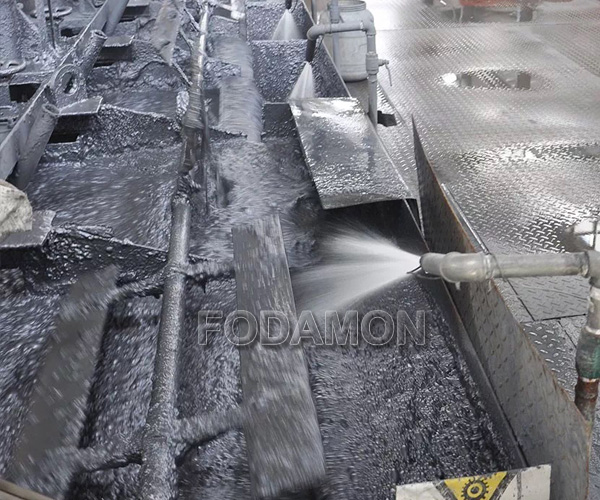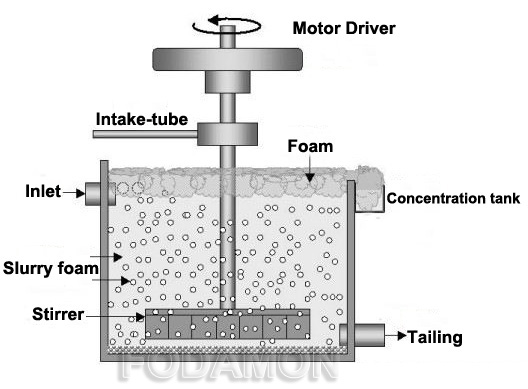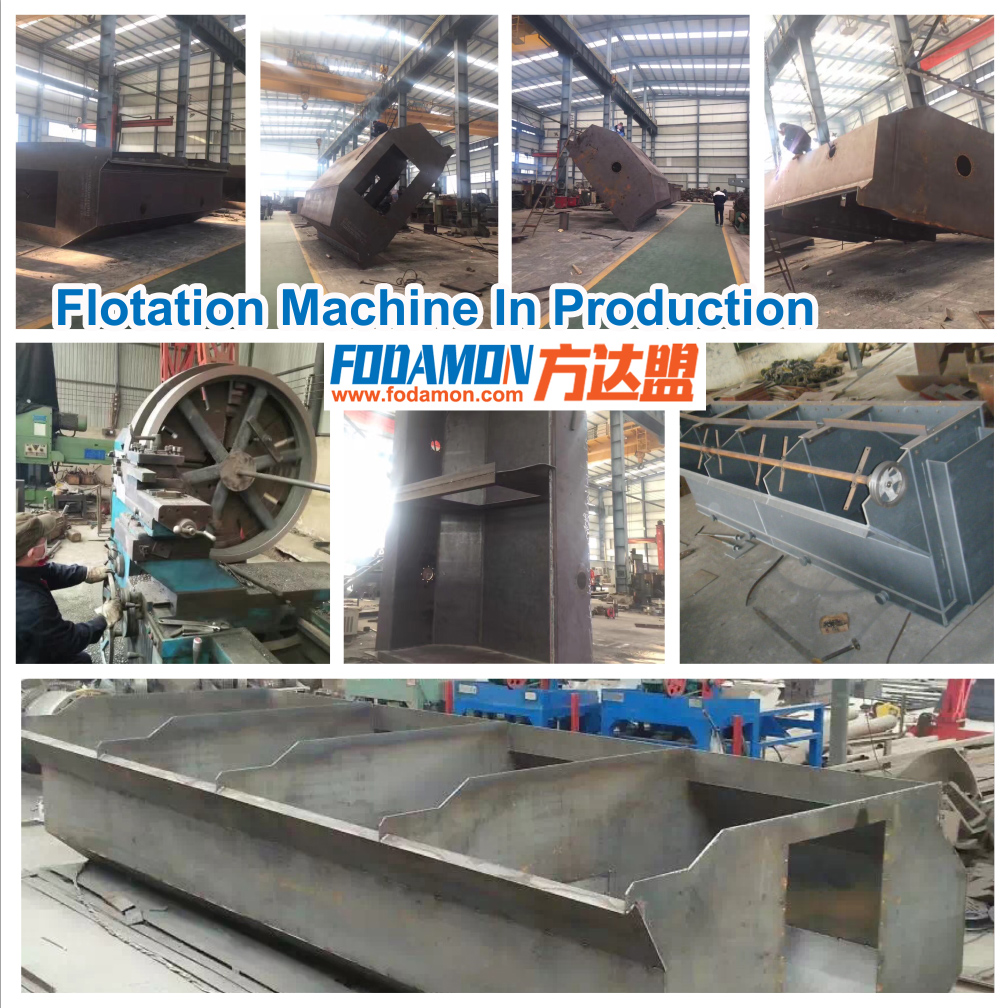In the fourth chapter, Fodamon engineers continue to explain the basic knowledge of flotation.
- What is flotation speed? Flotation time? What is the relationship between flotation time and separation index?

The so-called flotation speed refers to the recovery rate of useful components obtained by a certain ore in a certain flotation time and under certain operating conditions. If V is used to represent the flotation speed, ε Represents the recovery rate, T represents the flotation time, then its mathematical formula is: v= ε/ t。
Therefore, increasing the flotation speed is to improve the recovery and shorten the flotation time. Increasing flotation speed is an important problem in the operation of flotation plant.
The so-called flotation time refers to the time that the pulp stays in the flotation cell, or the time that the pulp flows through the flotation cell. For example, the rough separation time is 10 minutes, that is, the time that the pulp flows through the rough separation flotation cell is 10 minutes. Similarly, the flotation time of scavenging and cleaning also means the same.

Under the same other conditions, the flotation performance is closely related to the flotation time. Generally, the recovery rate increases with the increase of flotation time, but after a certain time, the flotation time is prolonged, the recovery rate is no longer improved, but the concentrate quality will be reduced. Therefore, increasing the flotation time is meaningless.
The optimum flotation time of each ore is generally determined by beneficiation test. Increasing the flotation time in production requires increasing the number of flotation machines and increasing the power consumption. Therefore, the correct selection of flotation time is of great significance to the technical and economic indexes of flotation, especially for the flotation of polymetallic ores.

- What is the relationship between flotation particle size and flotation index?
In the flotation process, the flotation particle size has a great relationship with the separation index. During flotation, the attachment of ore particles to bubbles is the basic behavior of flotation process. Whether the ore particles are firmly attached to bubbles directly affects the flotation index. However, the firmness of the mineral particles attached to the bubbles is not only related to the hydrophobicity of the mineral particles themselves, but also related to the size of the mineral particles. Generally speaking, if the ore particle is small (except that it is less than 5 ~ 10 microns), it adheres to the bubble faster and more firmly. On the contrary, the particle size is coarse, the adhesion to bubbles is slow and not firm. When the floatability of ore particles is good, that is, minerals with large contact angle, the flotation particle size D can be coarser. Of course, there is a certain limit, that is, the so-called upper limit of particle size. For the flotation of coarser particles, it is advantageous to have larger bubbles (R). In other words, when the bubbles are large, the contact angle of the floated minerals can be floated under small conditions. However, when the bubble is too large, the stability of the bubble itself is poor.

According to the above analysis, it can be seen that the flotation particle size is one of the important factors affecting the flotation performance. In order to obtain better flotation technical and economic indicators, it is required that the grinding fineness should be reasonable, not only fully separate the useful minerals, but also the coarse particles should not be greater than the upper limit of flotation particle size, and the lower limit of fine particles should not be less than 10 microns (or 5 microns). Upper limit of flotation particle size: sulfide minerals are generally 0.2 ~ 0.25 mm, natural sulfur with good floatability is 0.5 ~ 1 mm, and coal is coarser, 1 ~ 2 mm.
